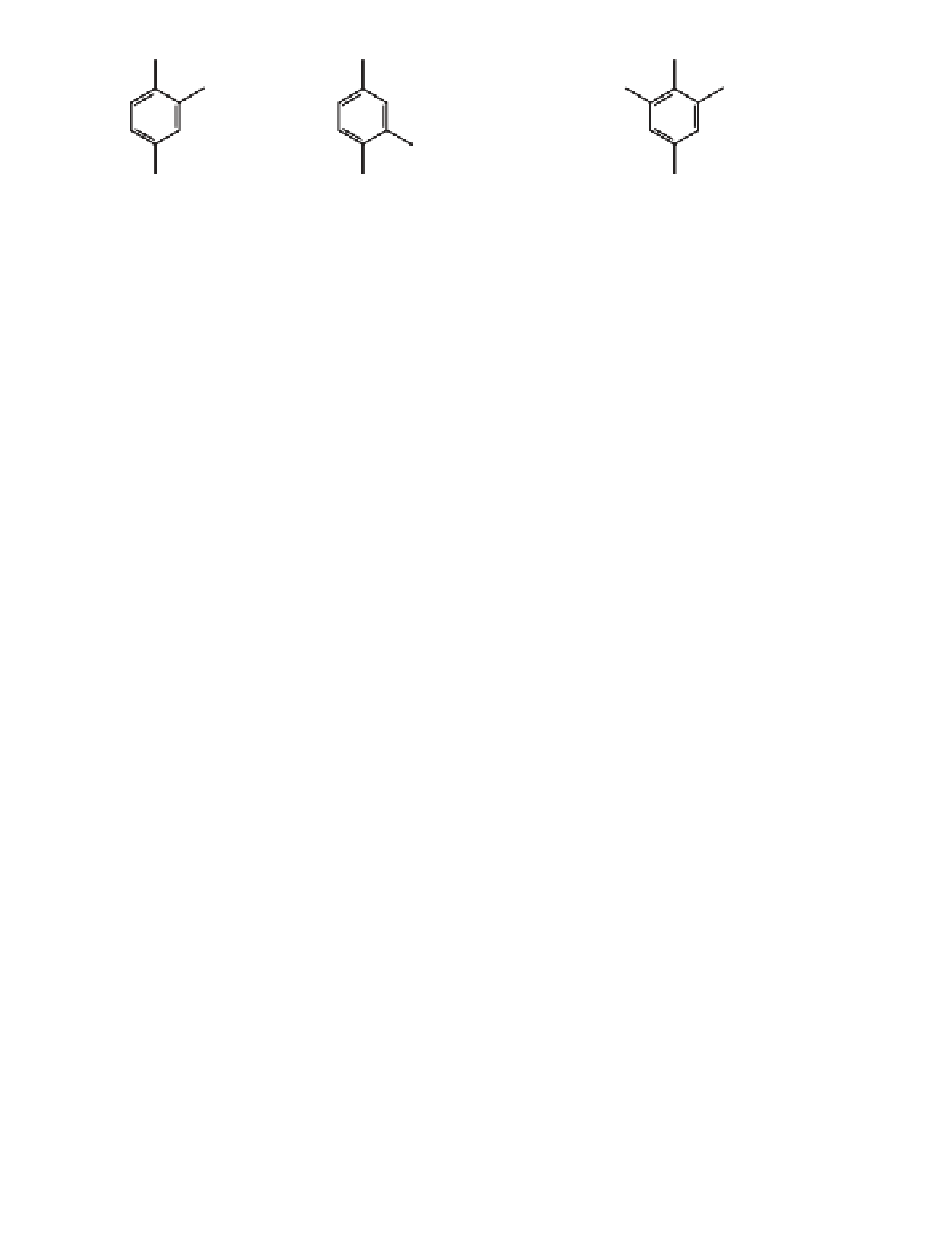Biomedical Engineering Reference
In-Depth Information
OH
OH
OH
C(CH )
3
3
(CH ) C
33
C(CH
33
C(CH
33
OCH
3
OCH
3
CH
3
3-BHA
2-BHA
Butylated Hydroxyanisole (BHA)
Butylated Hydroxytoluene (BHT)
FIGURE 6.4
Structure of synthetic antioxidants.
flavor and color of essential oils.
26
It also protects effectively short-chain fatty acids,
such as those found in cereal and confectionery products, from oxidation.
27
Because
of their volatility, these antioxidants are not effective in frying. BHA and BHT are
both used in packaging materials as they can migrate into the food. Together they
act synergistically and are used as such in many food antioxidant formulations
Propyl Gallate (PG)
Produced commercially by esterification of gallic acid with propyl alcohol, PG acts
synergistically with BHA and BHT (
Figure 6.5
).
Because PG chelates metal ions
such as Fe to form a blue-black complex, it is used with a chelator such as citric
acid to prevent food discoloration. PG, like BHA and BHT, loses its effectiveness
with heat due to evaporation and is therefore unsuitable in frying oils.
Tertiary-Butylhydroquinone (TBHQ)
Because of its excellent carry-through properties, TBHQ is considered by far the
best antioxidant for use in frying oils
(
Figure 6.5
)
. TBHQ does not chelate metal
ions and is used in combination with citric acid. Commercially, TBHQ is used alone
or with BHA and BHT at a maximum level of 0.02% or 200 ppm depending on the
fat content of the food. As a diphenolic antioxidant, TBHQ reacts with the peroxy
radicals forming a semiquinone resonance structure which undergoes a number of
different reactions until stable products are formed.
Ethoxyquin
Ethoxyquin, chemical name 6-ethoxy-1,2-dihydro-2,2,4-trimethylquinoline, is used
mainly as a feed antioxidant
(
Figure 6.5
)
. However, it is also used to protect fish
products and fish oil, poultry fats, potatoes, apples, and pears during storage. Ethoxy-
quin was found to effectively protect the pigments of paprika.
28
It was shown to
minimize nitrosoamine formation in bacon when added at a level of 20 ppm.
29
Formulations of ethoxyquin, however, are available from only one processor, Amer-

Search WWH ::

Custom Search